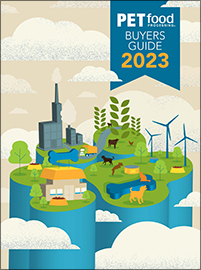This article was published in the November 2023 issue of Pet Food Processing. Read it and other articles from this issue in our November digital edition.
Since the turn of the century, numerous studies have shown that corporate sustainability is not only good for the environment, but also good for business. According to a 2012 academic literature review by Deutsche Bank, 89% of studies showed companies with high Environmental, Social and Governance (ESG) ratings posted improved corporate financial performance. In addition, a more recent study by NIQ revealed 65% of consumers said they would be willing to pay extra for a more sustainable product.
This sentiment certainly translates to pet owners — a consumer segment known for brand loyalty — as they shop for their four-legged companions’ food. Packaging and ingredient sourcing come immediately to mind when considering the environmental impact of pet food production, but there is a world of opportunity to reduce emissions and use natural resources more responsibly from the moment raw materials enter a manufacturing plant and throughout their transformation into finished products.
“Through their diets alone, cats and dogs account for an estimated 25% to 30% of the impacts from animal production in terms of land use, water consumption, greenhouse gas (GHG) emissions and other indicators,” said Amy Maxey, Pet Sustainability Coalition.
By baking sustainability practices into the manufacturing process, companies can capitalize on consumer demand, contribute to an eco-friendlier industry, and may even be able to realize bottom line benefits in the long term.
Going green
Although pet food production is known for upcycling animal byproducts that would otherwise go to waste, dog and cat nutrition still leaves a significant environmental pawprint.
“Through their diets alone, cats and dogs account for an estimated 25% to 30% of the impacts from animal production in terms of land use, water consumption, greenhouse gas (GHG) emissions and other indicators,” said Amy Maxey, senior member services specialist, Pet Sustainability Coalition (PSC), Boulder, Colo. “As such, it is critical for pet food and treat companies to take action to address their impacts.”
However, this is easier said than done.
“A common saying I hear from animal food companies in sustainability is that it’s hard to be green when you’re in the red,” said Lara Moody, executive director, Institute for Feed Education and Research (IFEEDER), Arlington, Va. “Put simply, that means their sustainability efforts must have some ROI opportunities for the organization to move forward. For that reason, energy and water use can be a good place to start, and those energy use options can translate to reduced GHG emissions.”
Energy efficiency, water use and waste management are three key opportunities that have been identified by pet food and treat producers as a way to reduce their environmental footprint from operations. For example, Golden Pet Manufacturing’s new state-of-the-art freeze drying plant in Germantown, Wis., was constructed to reclaim water and heat at several points throughout the facility to conserve resources and reduce waste.
“First, we look at energy efficiency and doing everything in our power to make sure our equipment and processes are energy efficient,” said Luke Koele, vice president of manufacturing, Golden Pet Manufacturing. “Secondly, we look at our waste streams and try to determine if there is any way possible to eliminate the waste stream and, if not, then we look for other vendors that may have a use for it or reuse it.”
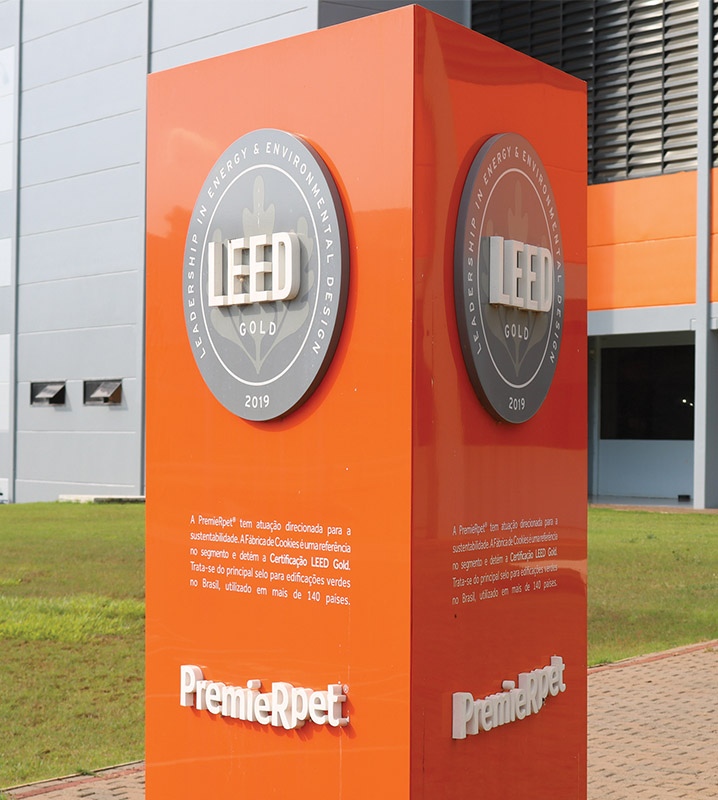
PremieRpet passed carbon footprint evaluations related to energy efficiency, air quality, water usage, waste handling and overall environmental impact “with flying colors” to achieve LEED certification at its facility in Brazil.
| Source: NatooGolden Pet Manufacturing intentionally selects equipment based on best-in-class energy efficiency and the company’s stringent sustainability standards. The company also reviews its waste streams annually to identify opportunities for improvement.
The use of renewable energy, such as solar power, is another way manufacturers can manage resources more responsibly. São Paulo-based PremieRpet, parent company of Natoo, recently invested in the largest solar power plant in the state of São Paulo, making it the first pet food company in Brazil to adopt the 100% renewable electrical energy source across its operations, according to Fernando Maluf, vice president of international sales, PremieRpet. The facility also uses thermal energy from reforested eucalyptus.
“We really try to focus on using sustainable energy as our inputs for pet food production,” Maluf said. “All of our electrical energy comes from a solar farm that is owned by our parent company and all of our heat energy comes from reforested eucalyptus from the surrounding areas.”
Energy purchase agreements offer manufacturers a way to utilize wind, solar or hydropower without a steep in-house investment, Maluf added.
For companies that rely on co-manufacturers — and therefore have less control over their operational impacts — offsetting emissions by partnering with third-party platforms can help brands take sustainability into their own hands.
“I would say we have found offset — and offset style — programs to be the most accessible,” said Nathalie Berman, assistant to the president, Grandma Mae’s Country Naturals LLC, New York. “While we would like to expand our sustainability initiatives, as a small company working with co-manufacturers, it is difficult for us to have control over the sustainability of our whole supply chain.”
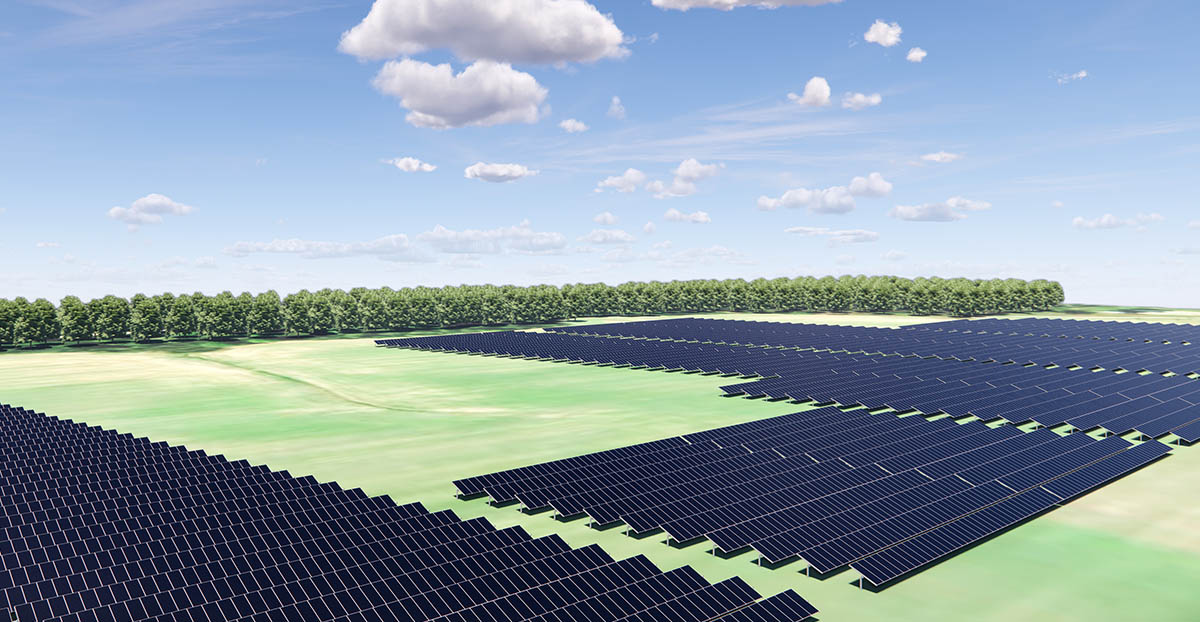
Grandma Mae’s Country Naturals announced its support of Clearloop’s Panola I Solar Farm in Mississippi earlier this year to offset its carbon emissions from transportation operations.
| Source: Clearloop
In August, Grandma Mae’s announced a partnership with Clearloop to offset its carbon footprint from transportation. Through an investment in Clearloop’s Panola I Solar Farm in Mississippi, the pet food brand will play a role in preventing 827,000 lbs of carbon emissions from entering the atmosphere and generating renewable energy for local communities.
The buzz
At ADM, Decatur, Ill., the company’s Strive 35 initiative includes reduction goals for GHG emissions, energy efficiency, water intensity, and waste-to-landfill spanning its entire global operations. In select supply chains, the company works with local growers to incentivize regenerative agriculture practices that sequester GHG emissions, improve soil health and protect water quality.
Melding sustainable sourcing with eco-forward operations, ADM has also established a partnership with Paris-based Innovafeed to foster the emerging market for insect-based pet food ingredients, the production of which offers myriad benefits for the environment and for pet health.
“Black soldier flies (Hermetia illucens) are powerful upcyclers,” said Jorge Martínez, president, pet nutrition, ADM, “They efficiently turn low-quality feedstock into premium ingredients, potentially making them a more sustainable alternative source of protein and oil for pet nutrition.”
The partnership involves the construction of a vertical insect farm strategically co-located with ADM’s corn processing complex in Decatur, creating an “industrial symbiosis” model with direct connections between facilities, according to Martínez.
“Through Innovafeed’s proprietary technology, the natural lifecycle of the black soldier fly (BSFL) is reproduced on an industrial scale in a highly automated indoor farm utilizing a circular, zero-waste model,” Martínez explained. “ADM will pipe wet corn coproducts to the Innovafeed facility as feedstock for BSFL — eliminating the need for dried feedstock transported by truck. Innovafeed will also repurpose waste heat from our facility, which would have otherwise dissipated into the environment.”
Business case considerations
Sustainability has many definitions, and environmental stewardship often looks different from company to company. This is why it’s crucial for businesses to do some sustainability soul searching and start small before committing to big-picture initiatives, according to Moody.
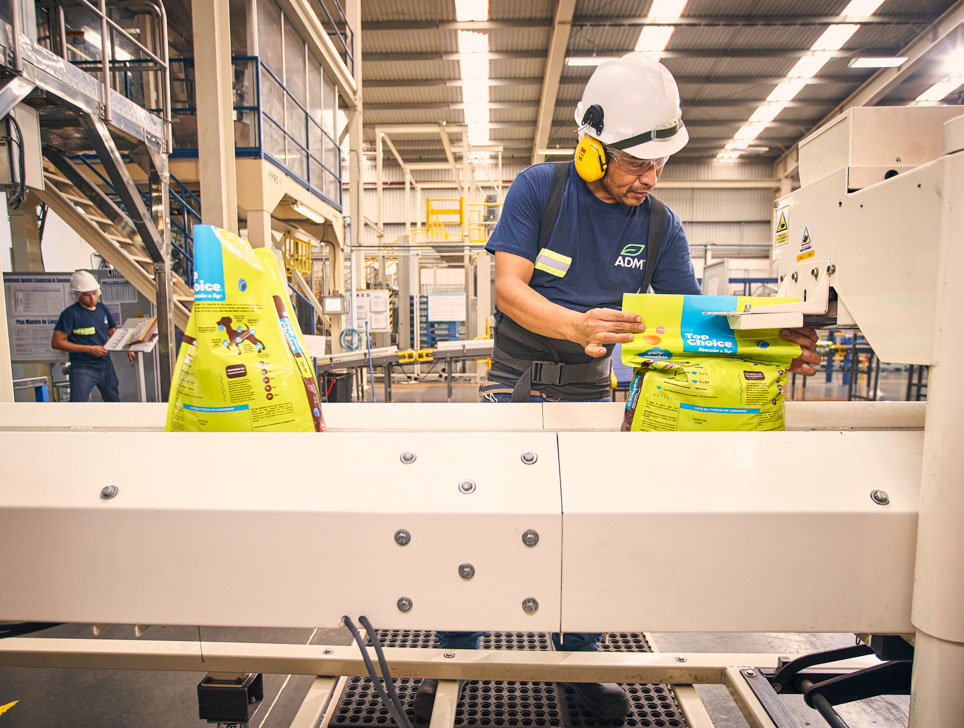
Operational sustainability starts with a green facility design and is continued through ongoing evaluation of equipment, processes and resource management.
| Source: ADM“It’s important to remember sustainability is about more than environmental actions,” she added. “Many companies are probably already carrying out efforts — such as in worker safety and community relations — that could allow them to communicate to stakeholders on their sustainability efforts. Then, consider the efforts your company is taking to cut energy costs or upgrade equipment — did those changes result in reduced energy use? Sometimes getting started can mean surveying what your company is already doing and building on it.”
Besides not knowing where to start, a lack of executive buy-in, cost and time are some of the biggest barriers for strategizing and implementing environmentally friendly operations, Maxey noted.
“Addressing sustainability can be overwhelming when companies first dive into its complexities, and beginning with low-hanging fruit is a great way to gain confidence,” she said. “Simple strategies, like ensuring your facilities have waste management systems in place that enable employees to recycle and compost, monitoring and setting targets for energy and water use reduction, and sustainable purchasing policies will educate and engage your team.”
As companies look beyond internal operations and consider the sustainability of their supply chains, the situation becomes considerably more complex. Supply chain mapping and product life cycle analyses (LCAs), while a clear way forward, can be time consuming and complicated, according to Maluf. Luckily, these practices are being adopted by more and more businesses.
“We have found many emerging practices among the companies we work with, including processes to minimize waste, track emissions data — especially Scope 1 and 2, with Scope 3 on the rise across all company types — and conduct life cycle assessments, implement regenerative agriculture practices, and utilize alternative protein sources for more sustainable food and treat product development,” Maxey said.
“In today’s world, more often than not, saving money is aligned with reducing waste and being more energy efficient,” said Luke Koele, Golden Pet Manufacturing.
In addition to collective improvement along the supply chain, companies who have taken the first steps toward more eco-friendly operations are seeing clear benefits ahead for corporate sustainability, production efficiency and profitability.
“We’ve noticed that a lot of the most efficient technology is also the most sustainable,” Maluf said. “While it has been a more expensive investment, we believe that it will provide a positive return — both environmentally and economically — in the long run.”
Koele added that as the industry moves toward more sustainable operations as a standard, innovative solutions will become more accessible to a greater number of companies seeking to reduce their environmental impacts in various ways.
“In today’s world, more often than not, saving money is aligned with reducing waste and being more energy efficient,” he said. “There are certain technologies that are currently in development that will improve ROIs and will become more available to the masses in the future.”
Not going it alone
An increased emphasis on industry sustainability has given way to a plethora of third-party consultants, certification bodies and support systems available to processors looking to slash their environmental impacts.
PSC is one such organization. The coalition has been supporting the industry since 2013 in key performance areas, including integrated strategy, building and climate efficiency, and supply chain sustainability to name a few. PSC also offers hands-on project support to help companies measure and strategize their environmental efforts, as well as a third-party certification tool to help brands determine which route is best for them.
“We have expertise working with our members to understand where they are in their sustainability journey,” Maxey said. “We utilize the SDG (Sustainable Development Goals) Action Manager Assessment, a tool to benchmark where companies are today, and create a roadmap for their sustainability goals with clear recommendations and next steps.”
IFEEDER is another industry partner working with manufacturers and suppliers to make the most of their sustainability journeys. The organization’s Animal Food Industry Sustainability Toolkit provides more than 20 resources, serving as an “on-ramp” for companies that are willing and ready to support broader sustainability goals. The toolkit takes a stepwise approach — walk, crawl, run — to meet producers where they stand today and guide them into a more sustainable future.
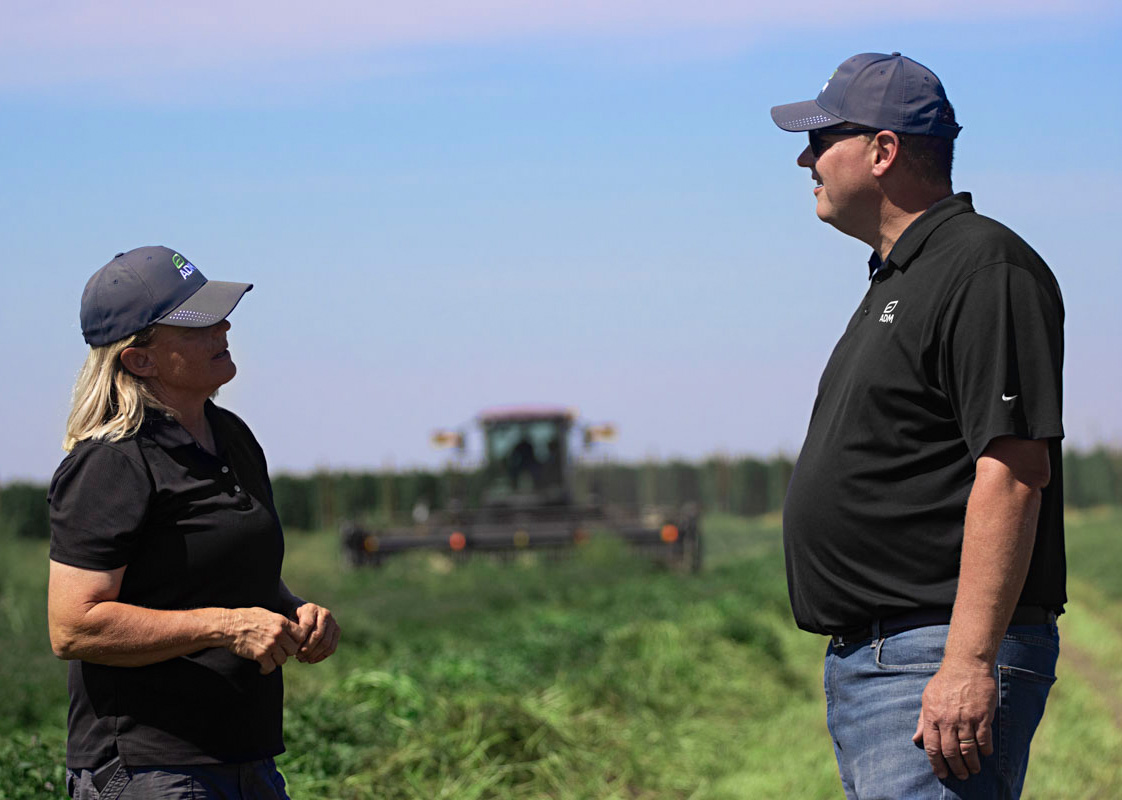
From executives to hourly workers, engagement at every level of an organization and every point in the manufacturing process can help companies identify missed opportunities, build on current initiatives, and strategize for a more sustainable future.
| Source: ADM
“Knowing where to start and taking the first steps is often the biggest barrier to managing eco-friendly operations,” Moody said. “In some cases, it’s a local product manager or operations lead that has been asked to ‘figure out what we need to do on sustainability,’ which can be daunting. This is one of the reasons IFEEDER created the Animal Food Industry Sustainability Toolkit — to provide animal food companies resources, based on informed research and stakeholder input, that can help them get started or support them wherever they are in their sustainability journeys.”
Additionally, adhering to Leadership in Energy and Environmental Design (LEED) practices set by the US Green Building Council is a good rule of thumb for facilitating reduced energy consumption. LEED uses a rating system to evaluate efficiency and sustainability for individual buildings, including pet food manufacturing sites.
“Construction of our facilities follows the LEED’s policy and our facility has even earned a Gold certification, meaning that it was critically evaluated on a number of criteria — including carbon footprint, water usage, energy efficiency, interior air quality, waste handling methods and environmental impact — and passed with flying colors,” Maluf said.
It is important to note that continuous improvement is a crucial part of this process to ensure the ball keeps rolling in the right direction. Keeping operations accountable through third-party certification can help companies keep their sustainability strategies on the hook for the long haul.
The future of sustainable operations
Koele predicted a surge of more sustainable raw materials — from plant-based to cultured to insect proteins — will become “a much larger part of the conversation” over the next 10 years. Additionally, Maluf noted the cost of planet-proofing operations could decline in the future as sustainable infrastructure evolves and becomes more available.
“The way forward is making technology that is good for the planet available for all,” he said.
To foster internal engagement, Maxey suggested collecting employee feedback to determine which sustainability values are most meaningful to team members. This could also spur interest in the creation of a “green team,” through which employees can become directly involved in helping reduce their company’s environmental impact.
The more stakeholders a company can get on board, the easier it will be to strategize and execute around sustainable operations. This includes establishing partnerships with likeminded players in the pet food manufacturing space, as well as consultancies and associations that can lend valuable perspectives to the plan.
Read more about pet food and treat processing on our Operations page.



